Pushing the boundaries of classroom learning and cross-disciplinary collaboration, a revolutionary course is redefining how students engage with real-world construction challenges. The Undergraduate Architecture Program at Universitas Gadjah Mada (UGM) reaffirmed its commitment to sustainable architectural education through the launch of a special course titled Sustainable Materials and Construction. Delivered in the even semester of the 2024/2025 academic year, the 3-credit course was developed in collaboration with the Department of Civil and Environmental Engineering (Integrated Engineering) at Universiti Teknologi PETRONAS (UTP), Malaysia, and officially commenced at the end of May 2025. Far beyond blueprints and design theory, this course offers a holistic view of the construction industry—integrating architecture, civil engineering, and environmentally conscious technology.
Over the span of four weeks, 43 students—20 from UGM’s Architecture Program and 23 from UTP’s Civil Engineering Program—were grouped into five interdisciplinary and intercultural teams. Each group was tasked with designing a low-rise community facility that reflects sustainability principles. Their designs had to fulfill both structural safety standards and demonstrate low carbon impact in both construction and operation. Conducted virtually, this course provided students with a meaningful, hands-on experience of collaborative problem-solving in the complex, multidisciplinary world of construction.
From UGM, Dr. Yani Rahmawati and Ar. Dr. Alexander Rani Suryandono facilitated the course, while Assoc. Prof. Ir. Dr. Bashar Mohammed and Assoc. Prof. Ir. Dr. Zahiraniza Mustaffa led the sessions from UTP. Through guest lectures and group consultations, students gained valuable insights into sustainable construction materials and innovative applications. The course not only strengthened their technical capabilities but also broadened their perspective on material innovations and environmental responsibility within the built environment.
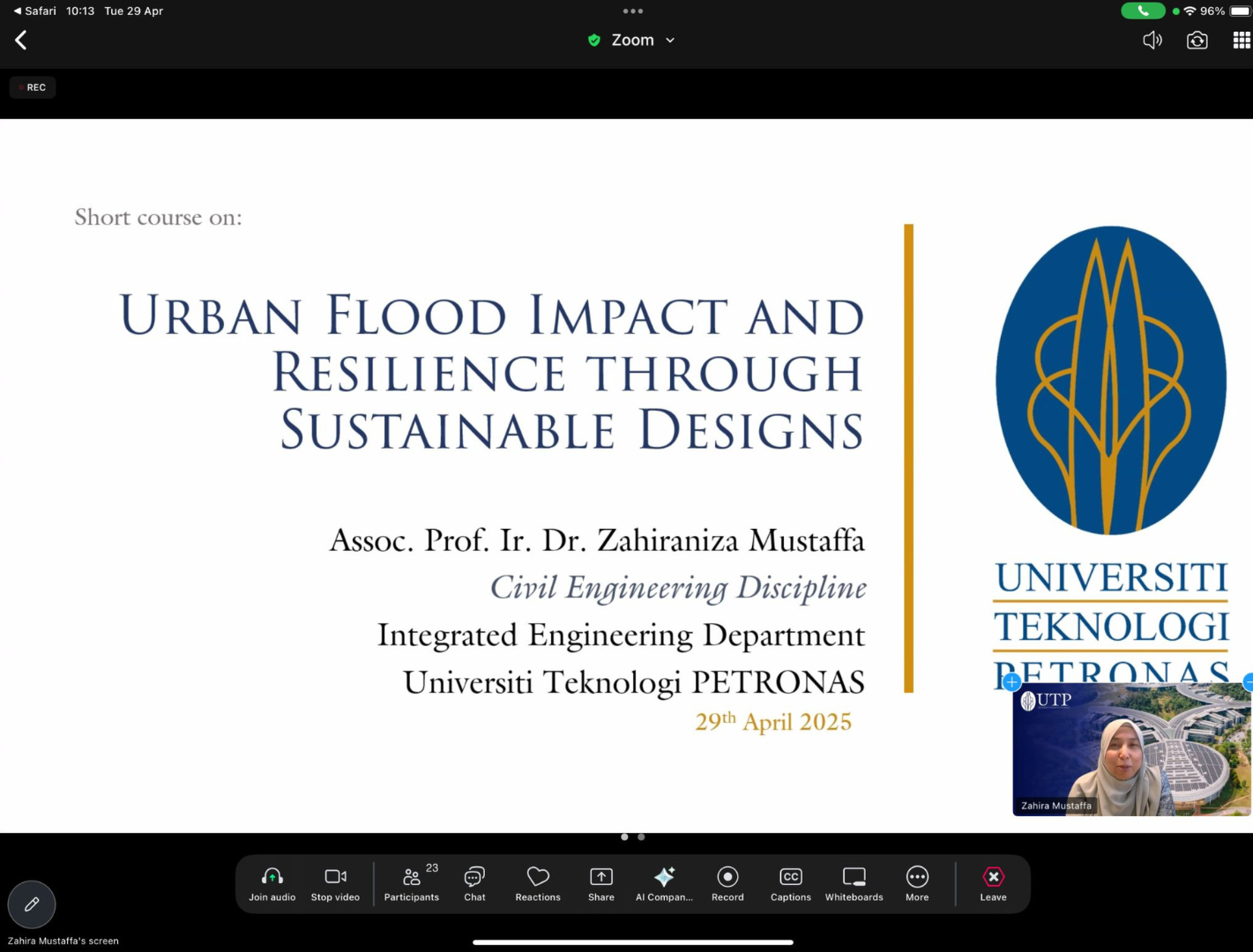
One of the highlights was a guest lecture by Prof. Bashar, who introduced the concept of rubberised interlocking bricks—a construction innovation made from recycled rubber, especially from used tires, combined with concrete aggregate to create durable, eco-friendly building blocks. According to the World Economic Forum (2023), over one billion used tires are discarded globally each year, most ending up in landfills or being incinerated, contributing significantly to air pollution and carbon emissions. The use of recycled rubber in construction offers a tangible solution to this pressing issue and serves as a compelling case for material innovation.
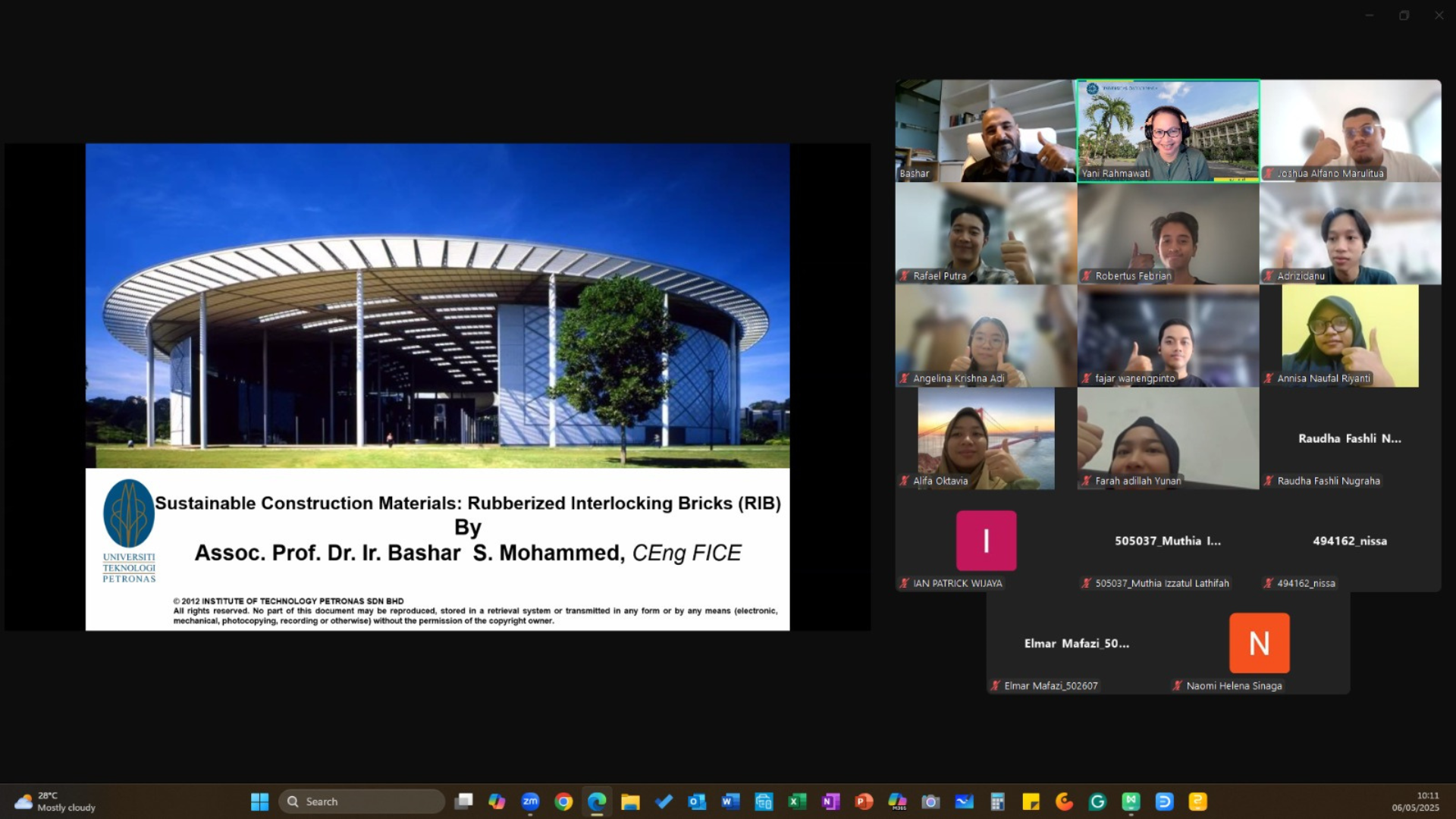
This course directly supports Sustainable Development Goals (SDGs) 12 and 13, focusing on responsible consumption and production as well as climate action. The application of reused materials in the construction sector aligns with SDG 12 by emphasizing product life cycles and waste reduction. Additionally, students are encouraged to think critically and creatively about alternative materials in their local environments that could be transformed into sustainable design solutions. By using recycled materials, students also address the urgent demands of SDG 13 by reducing carbon emissions from material production.
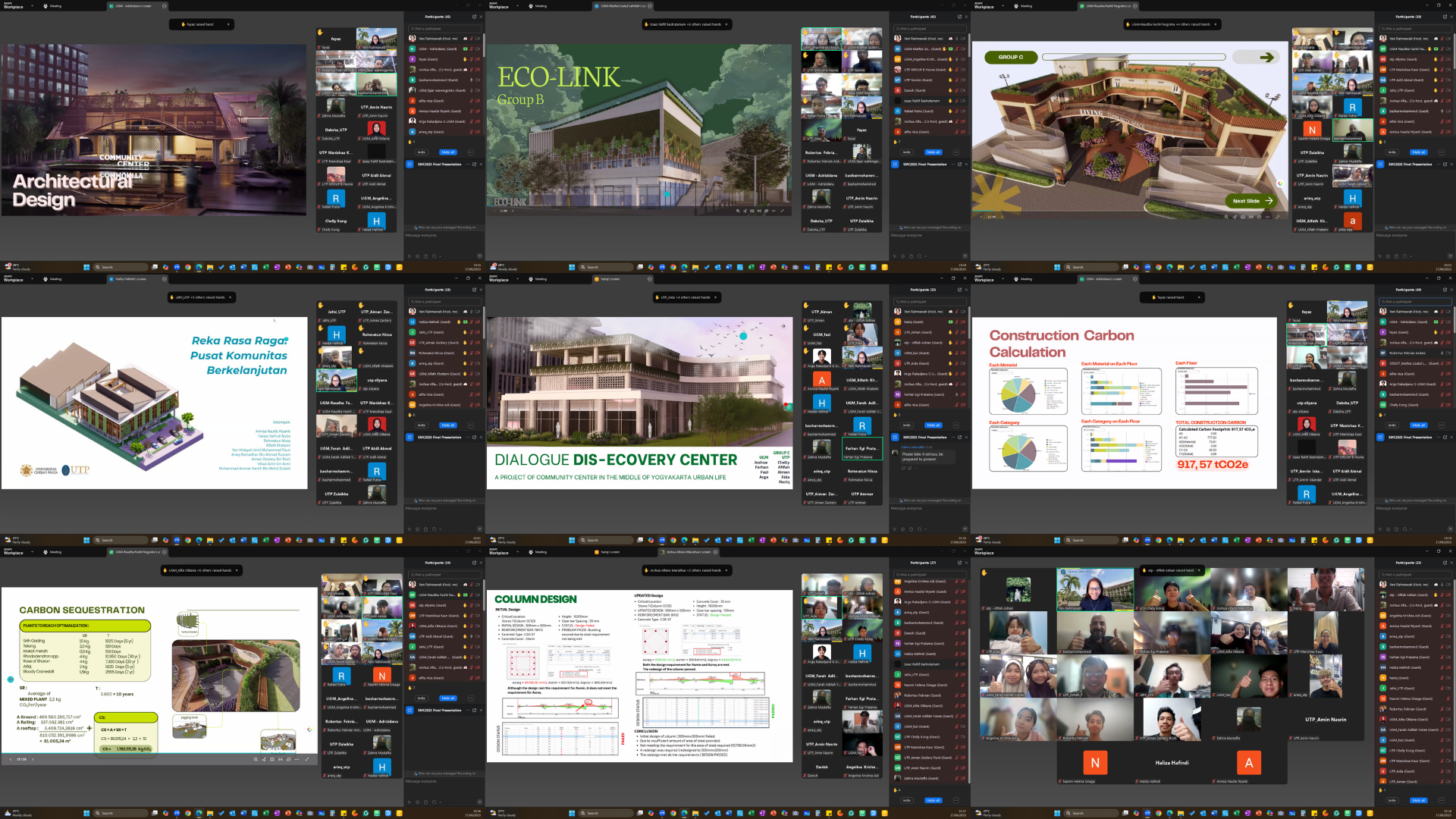
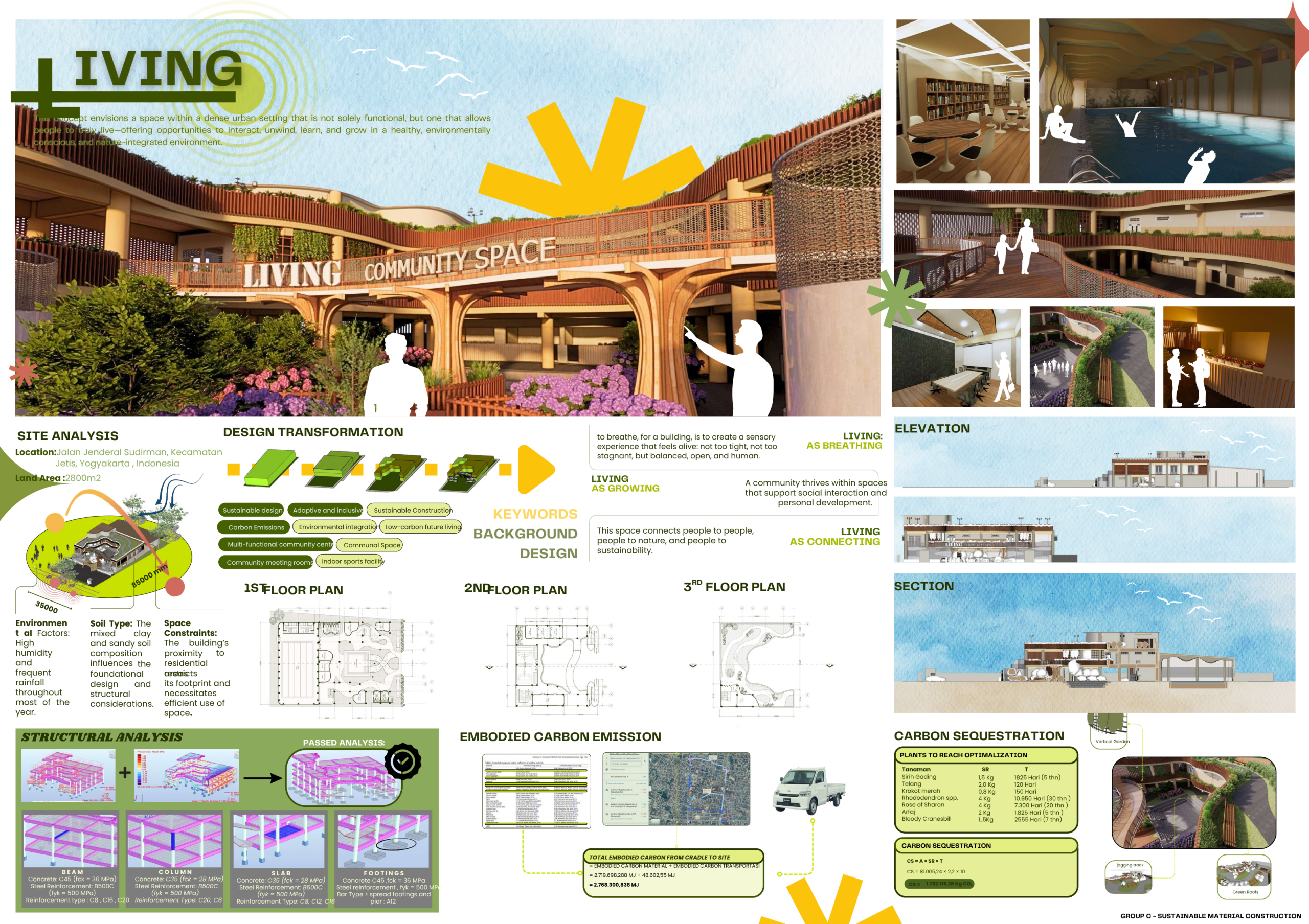
UGM’s Architecture Program remains committed to advancing sustainable architectural education and contributing actively to global efforts for a greener future. Through this course, students are not only introduced to the technical aspects of sustainable materials but are also encouraged to implement their knowledge into real-world design practices. Ultimately, the goal is to cultivate future architects who not only create aesthetically and structurally sound designs, but also contribute meaningfully to ecological preservation. This green-minded educational initiative is part of UGM’s tangible contribution to shaping a healthier and more sustainable world.
Reported by Rindi Dwi Cahyati
